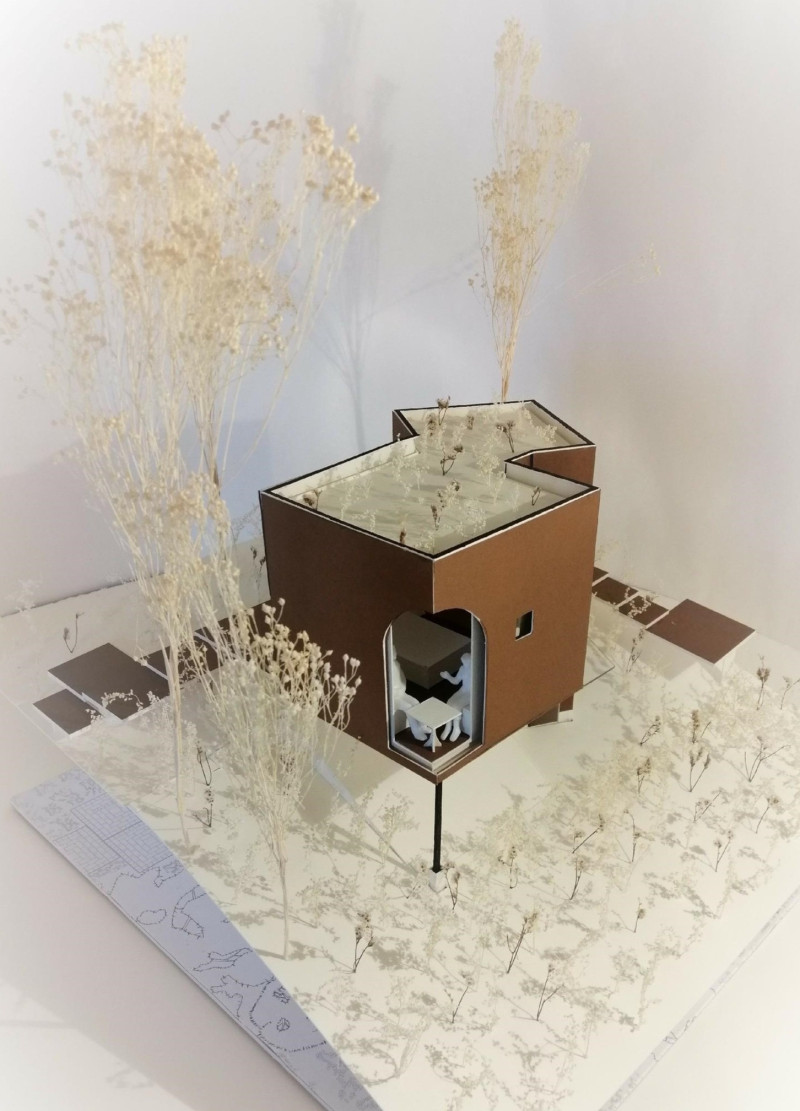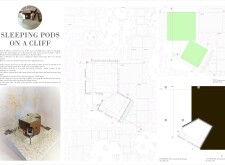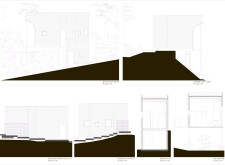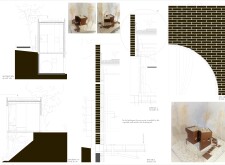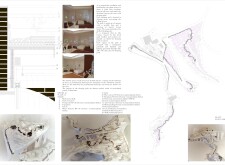5 key facts about this project
In Vale de Moses, Portugal, an innovative living space emerges within a rich forest environment. The site features maritime pine trees and shrubs like Heather and Rockrose. The design aims to create a strong connection to nature while addressing the challenging risk of wildfires. The focus is on an ecological and fireproof outer shell that not only serves its functional purpose but also fits well within the landscape.
Outer Shell Design
The outer shell of the sleeping pods is a protective structure that also acts as a part of the environment. Made from solid earth brown brick, it is designed for durability against various elements. Steel elements provide added support, ensuring the structure remains sturdy in different weather conditions. This material selection demonstrates an understanding of sustainability, while the design minimizes any disruption to the existing ecosystem.
Interior Layout and Function
Inside the sleeping pods, the layout allows occupants to feel closely connected to the surrounding landscape. The careful positioning of the pods provides views of the mountains to the northwest and the river to the east. The interiors are finished with wood-based panels known as Valchromat, which create a warm and inviting atmosphere. This contrasts with the more robust exterior and enhances the comfort of the interior spaces.
Circulation and Landscaping
A path connects the sleeping pods, guiding movement through the forest while blending naturally with the surroundings. The path is made of metal squares and topped with massive brown bricks, reflecting the same materials used in the pods. It promotes accessibility and encourages interaction with the environment, allowing people to walk through nature without causing harm. Planting native species like heather and rockrose reinforces the commitment to maintaining local biodiversity.
The overall design approach ensures that the sleeping pods not only serve a practical purpose but also respect and enhance their natural setting. Elevated on platforms, they leave the forest floor undisturbed, allowing the natural landscape to flourish underneath and around them.


